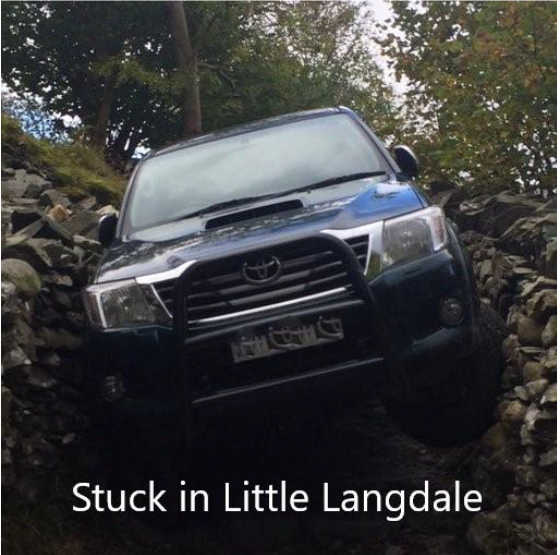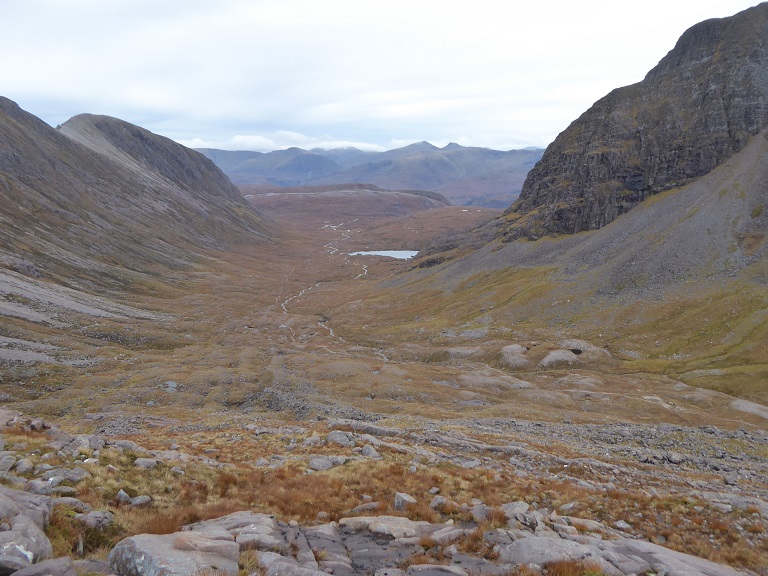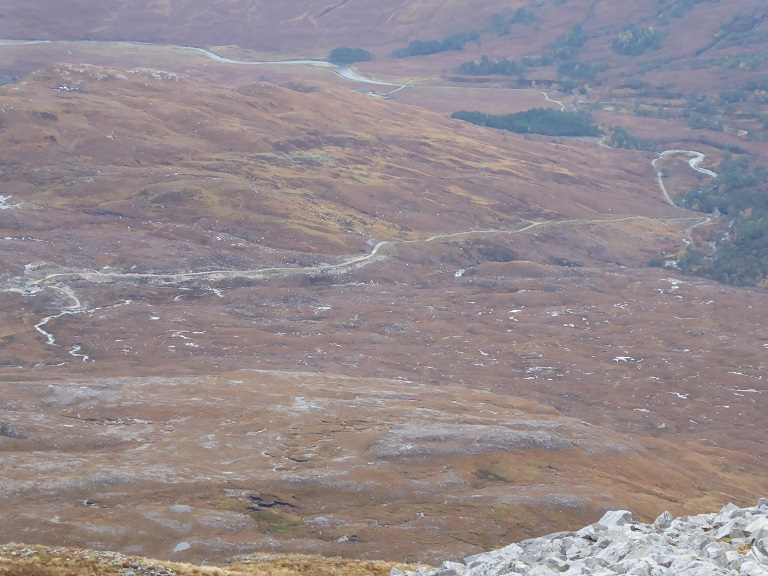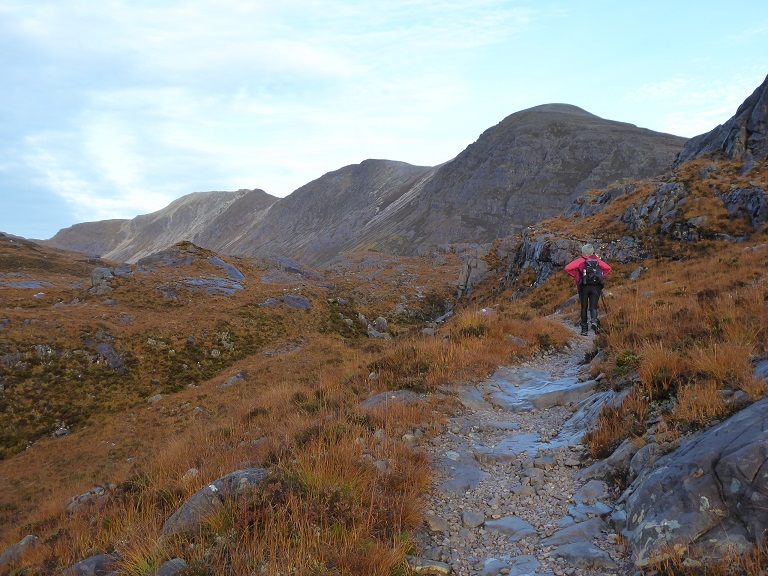
It is hard to know whether to be inspired or depressed by the battle over vehicular use of “green lanes” which I touched on a year ago in post comparing what was going on in the Lake District National Park and the Loch Lomond and the Trossachs National Park (see here) The latest newsletter of the Lake District Green Lanes Alliance (see here) is well worth reading for anyone concerned about what is happening in our National Parks, whether in England or in Scotland:
The question many people are asking themselves in disbelief is this: how have we ended up with this surreal state of affairs? How is it possible that the LDNPA [Lake District National Park Authority], the public body set up for the conservation of the Lake District, is now fighting side by side with off-road motoring organisations – against UNESCO, the National Trust, the Friends of the Lake District, the Ramblers, eminent climate and environmental scientists and over 375,000 signatories to our petition?
Inspiring that a small campaign group ended up with 375,000 signatures – approximately six times more than signed the Flamingo Land petition – depressing that they so far they have not been able to change anything. And even more depressing that the Lake District National Park Authority joined with motoring organisations opposing them in court. It is the right question, how have our National Parks sunk so low?
The Green Lanes alliance newsletter prompted me to take a look at how the LDNPA Board was operating and I across a paper (see here) from their October Board Meeting on the Breast High Rd Restoration project. The byway links Tebay, just off the M6 with Kendal, and has been seriously damaged by vehicular use. Instead of banning vehicles from a road that was never designed for them, the LDNPA is proposing to use £325,000 from the Electriciity Northwest Landscape Enhancement Initiative – a fund created to compensate for the landscape damage by electricity pylons – to make the road fit for continued vehicular use. That a well intended fund has been hijacked by a National Park Authority to enable vehicle to continue to drive along green lanes tells you something about just how far it has lost its way.
The issue at heart comes down to preserving places in the countryside which we, as humans, can only access under our own steam. This is highly valued by most people who want places where they can walk without tangling with traffic, wheel ruts or diesel fumes. Hence the extraordinary number of signatures on the Green Lanes Alliance petition.

I was thinking about this last week when walking down into Coire Lair, located off Strath Carron, from Sgurr Ruadh. It’s an amazing landscape, but one of the reasons it felt so special was that walking up into its lower reaches earlier in the day, after the first 200m there was no vehicle track and even more amazingly no sign of any vehicular use. A car free coire.
Unlike other parts of Scotland, the Torridon area was until fairly recently all like this but then came the spree of hydro electric projects:

The landscape scar of the Coulin hydro scheme is no less than when I blogged about it two years ago (see here). But what also struck me was how completely different it felt approaching Beinn Liath Mhor through Coire Lair than walking down the road to the north east. A walking rather than a vehicular route, enhanced by the fine stalkers’ path:

At the risk of falling into National Park speak, the “experience” was immeasurably superior. Something very special.
Green Lanes in the Lake District and the path into Coire Lair may be at different ends of the walking spectrum, the one through an intensively managed and the other through a wild landscape, but a value they both share is they enable us to get away from vehicles. We risk losing both unless our public authorities start to value and protect vehicle free places. Our National Parks are the bodies that should be giving a lead on this but in their different ways are failing to do so: Green Lanes trashed in the Lake District, the profusion of hydro roads in the Loch Lomond and Trossachs National Park and All Terrain Vehicles criss-crossing most of the Cairngorms, sometimes on bulldozed tracks, sometimes not.
It’s hard to think of many places in Scotland’s National Parks as special as Coire Lair and the landowners who have preserved such places deserve our support and gratitude. How National Parks could keep deer numbers down, enabling woodland to regenerate naturally where the ground was suitable, without relying on vehicles is an issue to which I will return.
If your going to preserve the landscape damage done by walkers in the Lakes it means reducing walkers, I have yet to see any reduction to allow the land to recover. If you reduce the number of walkers then every business suffers. Damage from footfall, litter and parking by walkers does not seem to have entered into this argument, maybe due to vested interests. It is relevant that if you are concerned about damage to the UNESCO status that footpaths have been overlooked. How about a ban on walking on Scafell, Hellvellyn and Skiddaw until the ground recovers, how many walkers donate to the footpaths team to ensure paths are maintained, so the argument is misplaced, just try banning walkers from Catbells for a year to allow recovery and see the arguments stack up for keeping it open, the very same arguments used by mountain bikers, horse riders, skiers, trail bikes, climbers, cavers and mine explorers, it is dangerous to target a single group when all the other users have the same justification, something which was difficult to overcome in the court case I believe
As I understand it many of the contentious routes across the Lake District always were long established byways, some are long distance droving paths . The difference between these byways and the increasing number of paths trodden down by walkers and ramblers,there and elsewhere across UK is their historic status as more direct link roads available to all local traffic between remoter parts of the region. The decisions that have left so many of these byways unsurfaced and too frequently poorly maintained have always been justified by the huge cost of bringing them into the surfaced road network today, for so little economic benefit.
This is not the same as in the upland areas of Scotland. Few of the traditional Scottish upland routes were ever suitable for general wheeled traffic, and a number of those that once were have already been closed down to general access. The old system of “adopted” roads , has largely broken down. Category C&D roads lack proper public funding in most regions. Some upkeep of essential features has in the main reverted to the local land owners. There are extensive lists held by each local authority denoting the status of all roads in Scotland. Status D Designated Roads can be identified particularly in the Scottish borders, where the local authority is nominally responsible for upkeep, but which cannot today be spotted on satellite images at all. The official records are that out of kilter. It is perfectly permissible for a raod vehicle to use these even straight across so called “private land” … in Scots law.
There is a real challenge for Scotland when any land Owner may ‘force’ a new private access road into pristine areas, for claimed economic reasons ,to which no one else may ever be permitted access to. This willful destruction of scenery benefits no one else in any way at all but destroys glens for off trail walkers . The attempt to designate some type of public recreation bad , and the pursuits of a few others more acceptable, is a very thorny topic. Conflating leisure use , the anti wheeled traffic revolt in some regions, and the willful destruction for shooters , wind turbine and mini-hydro installation is far too simplistic. In Scotland a clear need exists for full planning control before any new route is blasted scraped and battered in to the hills and glens is paramount. Wringing of hands and then awarding “As built” retrospective consent is far too lax. (and then when viewed today from a satellite what stands out across upland areas in Europe, UK hills and Scottish peaks are well trodden crumbling and eroded paths where no wheel has ever rolled ?).
“Divide and rule”. Particularly in Scotland there is room for everyone, and the number of 4×4 tracks is totally insignificant.
The vast majority of paths will never be accessible to vehicles.
Bikes are quite another issue. I took up walking relatively recently and rapidly discovered that for a relaxing walk it is necessary to stick to paths which are not rideable, otherwise you have to be continually on the alert to avoid being run down. Even when you notice them the majority clearly expect you to stop and get off the path so that they can tear past.
Unlike 4x4s there are groups actively campaigning to convert footpaths to so called “multi use”. The Monsal Trail in Derbyshire has been ruined for walking by opening it up to bikes.
On the other hand I don’t subscribe to the purist notion that a walk is spoiled by catching sight of a road, access track or development. (For some reason railways despite their largely uncrossable nature never seem to attract the same opprobrium!)
The green lane driving lobby tend to focus on the physical state of routes in the Lake District. However, the primary issue is around the tranquility and peacefulness that Nick touches upon, its about getting away from tangling with vehicles and their effects. Noise is a significant issue. The tracks that are mentioned are used by both 4wds and trail bikes and the noise from the use of these tracks can be clearly heard over kilometre away at times. There are few places in England where you can get away from traffic noise. I am always struck (when there is no wind !) in the Scottish hills that you can appreciate real silence, something that is an endangered quality in the hills of Northern England, a quality that Park Authorities should be protecting and enhancing rather than undermining.
The green lane alliance info is so full of half truths and bias it beggars belief that it’s ever given any credence at all. In all my years of dealing with public access across multiple countries, I have never seen so much public funding wasted to appease such bigoted behaviour.
Your article mentions peace and tranquillity as the heart of the mountains, and in summary you make the statement that this can only be achieved or experienced if you walk to a spot.
After walking, drivng and cycling thousands of miles as a professional mountain leader and a multi level instructor in all of the mentioned disaplines, I find it quite an interesting but totally invalid thought that one can only find this tranqulity if a vehicle is not involved.
Everyone should be allowed to experience the mountains in their own way, why is it only socially accpetable for ‘walkers’ to be the good guys, when they do far more damage to every national park that all other user’s put together.
I’d be happy to supply you with plenty of evidence to support my statements about GLEAM and the rather lothesome Dutch holiday home owner who has wasted so much public resource in an area that enjoyed 20+ years of peace and quiet until his tantrums started.
Having read this article I am struck by the intolerance of some groups of people in todays society.
The National parks are for everyone to enjoy. Each individual should be allowed to find a way of helping themselves de-stress from the frantic world we live in. Peoples mental health should be the top of everyone’s list.
To suggest that the Lake District has had all its green lanes ‘trashed’ by vehicles is a most outrageous suggestion. Not least because the extreme weather and water run off is a massive factor. Footpaths are constantly eroding and being repaired at great expense by Fix the Fells and other contractors, but nobody is stopping this damaging activity.
It needs to be stated that only 3% of the byways in the National park are available for use by motorised vehicles. This leaves 97% of the routes for use by all walkers who don’t want to meet another vehicle while in the countryside apart from the one they needed to use to access the National park. This is something that people conveniently forget. Nearly all visits to the National park start off with a vehicle which has to travel down the small roads of the National park to crowd into the car parks or to be abandoned in positions that cause a problem to the farmers or local residents.
All walkers have the ability to study the maps to find an area of the Lake District which does not have a UCR (unclassified county road) or a BOAT ( byway open to all traffic), and this should be relatively easy considering 97% are not BOATs or UCR’s.
Tranquility is seemingly the word that people keep using at the moment and I understand that people like to find a place for quiet reflection (again the lakes are full of places to do this), but this is often over stated as tranquility is only broken for a very short period of time as vehicles pass, be they motorcycles, 4×4’s or farm vehicle. These vehicles are not following you all day and I feel it’s no different to the cars going over Hard Knott or Wrynose passes. Helicopters or military aircraft flying over.
I feel there are other issues which are causing problems in the Lake District National Park and that is the one of the second home owners who buy up the properties, out price the locals and reduce communities to ghost villages where shops and schools can not survive. This is having a far greater impact than a few vehicles driving on 3% of the byways. At least these vehicle drivers are adding to the economy by using cafes, B&B’s and garages when they arrive rather than starving a community of a permanent resident.
It also seems a bit weird to see the hydro electric schemes getting a bit of a bashing. Surely it is admirable that these schemes are used to such effect in Scotland and obviously need to have access to them for construction and maintenance. These tracks look no different to the endless gilly tracks which cover the Highlands. And again I am sure there are many valleys in Scotland where hydro electric schemes have not been constructed and people could walk there if they are so offended.
I really would like to see a world where peoples views and activities are respected, where there is room for people to enjoy their pastimes, where certain groups don’t feel the selfish need to prevent this for their own satisfaction especially when they are second home owners driving up to their houses in the ghost community looking for tranquility which they are adding to by destroying the local village life which had been around for centuries.
Well surely then if you want to go walking in the lake district and not see vehicles, would it not be wise to walk on a FOOTPATH NOT A PUBLIC ROAD OPEN TO ALL TRAFFIC!!?? There are plenty to choose from where vehicles are not allowed. Or are you the sort of person who expects to be able to cross the street outside your house without seeing moving vehicles too??!!!!
Byways make up approximately 2% of the RoW network (DEFRA 2005), since then many more have been closed to vehicles. To say that there is no respite to walk in tranquility, especially in a National Park that sees around 20 million visitors a year, most of whom travel there by car, when the LDNPA found around 40 vehicles were using the lanes in question in the case per month, is quite obviously ludicrous. If vehicles were so problematic why are there no complaints about people driving the mountain passes? Or, even more ironically, the helicopters flying stone to repair the footpaths. If the full assessment report compiled by the LDNPA is read in its entirety, it soon becomes very clear why they did not uphold the foolhardy quest GLEAM were on when they alleged so many unfounded, unevidenced, and in the case of their petition totally exaggerated, incidents or complaints. There was good reason their case failed to be upheld both by the assessment report and the subsequent judicial review – there simply was no evidence of their vitriol on the ground.
Their rhetoric is tantamount to hate speech, I have read many of their newsletters and in spite of the existence of the Equality Act 2010, they advise arguing with disabled people about their additional needs and vehicular use! Everyone can use a motorised wheelchair on footpaths apparently, that is something I can say as a keen walker is very much not possible, and as a human being who has some compassion and common sense, I am also aware not all disabilities can be addressed by a wheelchair even if all footpaths were suitable for them.
I also question the validity, or even legality, as an organisation. The public money they have crowdfunded to spend wasting further public money to bring legal proceedings against national parks is unaccounted for due to their unincorporated association status. They have been found to have duplicated petition signatories, encouraged people to copy and paste total falsities that do not match the reality of the lanes in physical composition or state, and have been forced to remove influential supporters from their website because these people had no idea their names were being used by them.
Far from a minority user group using the minority of the RoW network being a risk, the more I read about this ridiculous pressure group the more I am convinced they do more harm.
Just think of all the money and resources that could be saved and put back into our national landscapes if they did not exist to bring nothing to the table but be a barrier to inclusive and sustainable public access, and do so by riding on a cloud of hot air that would make the current goverment blush.